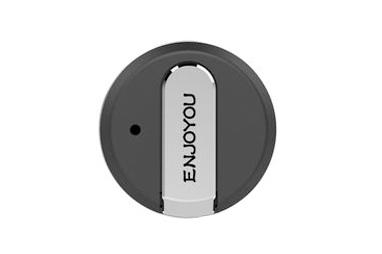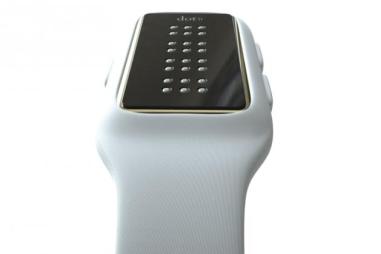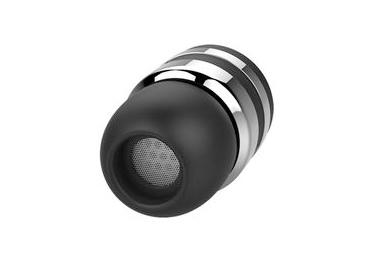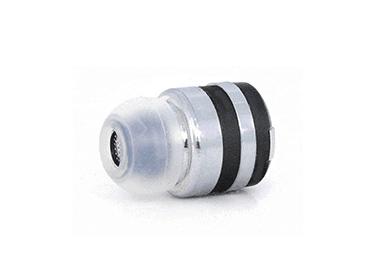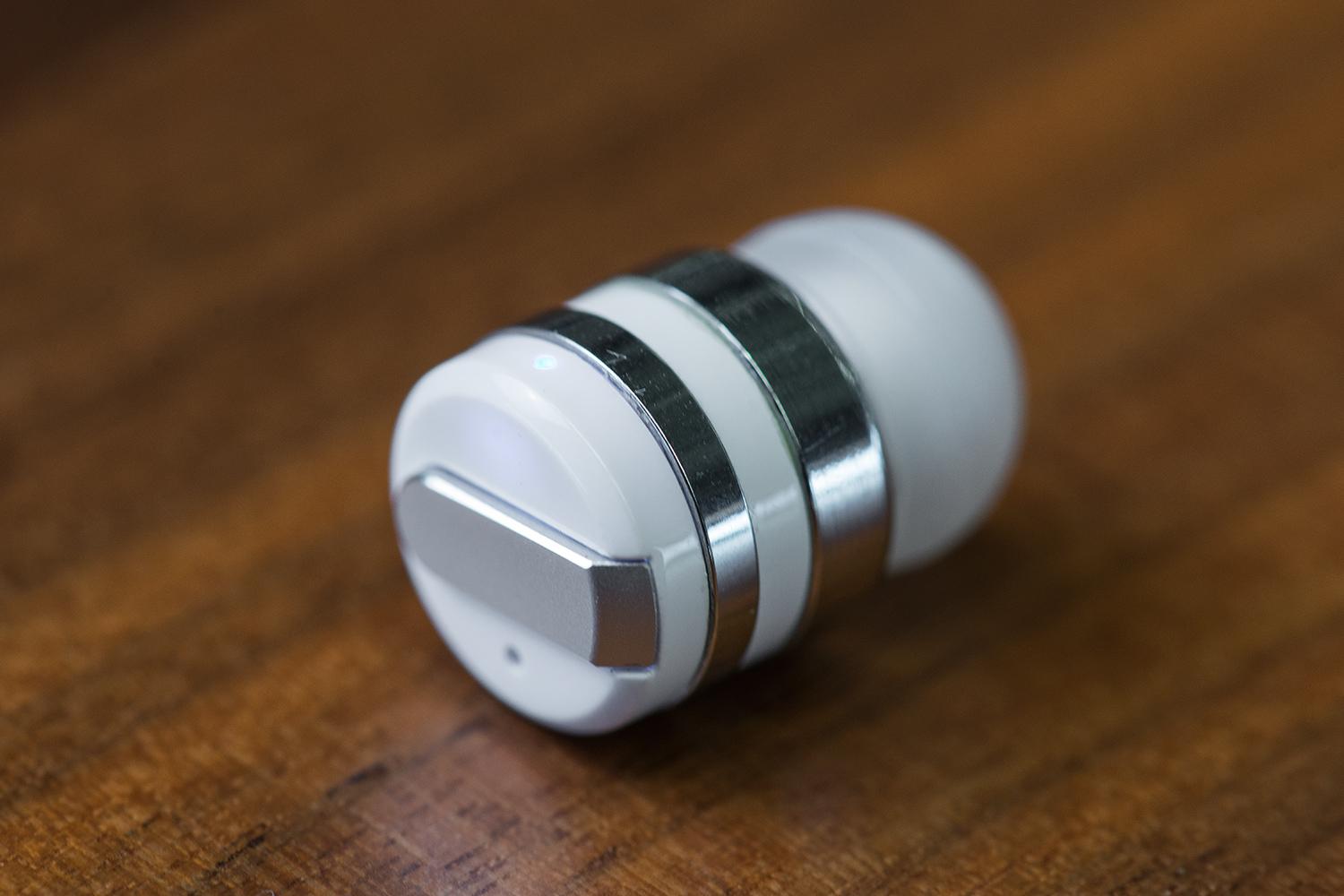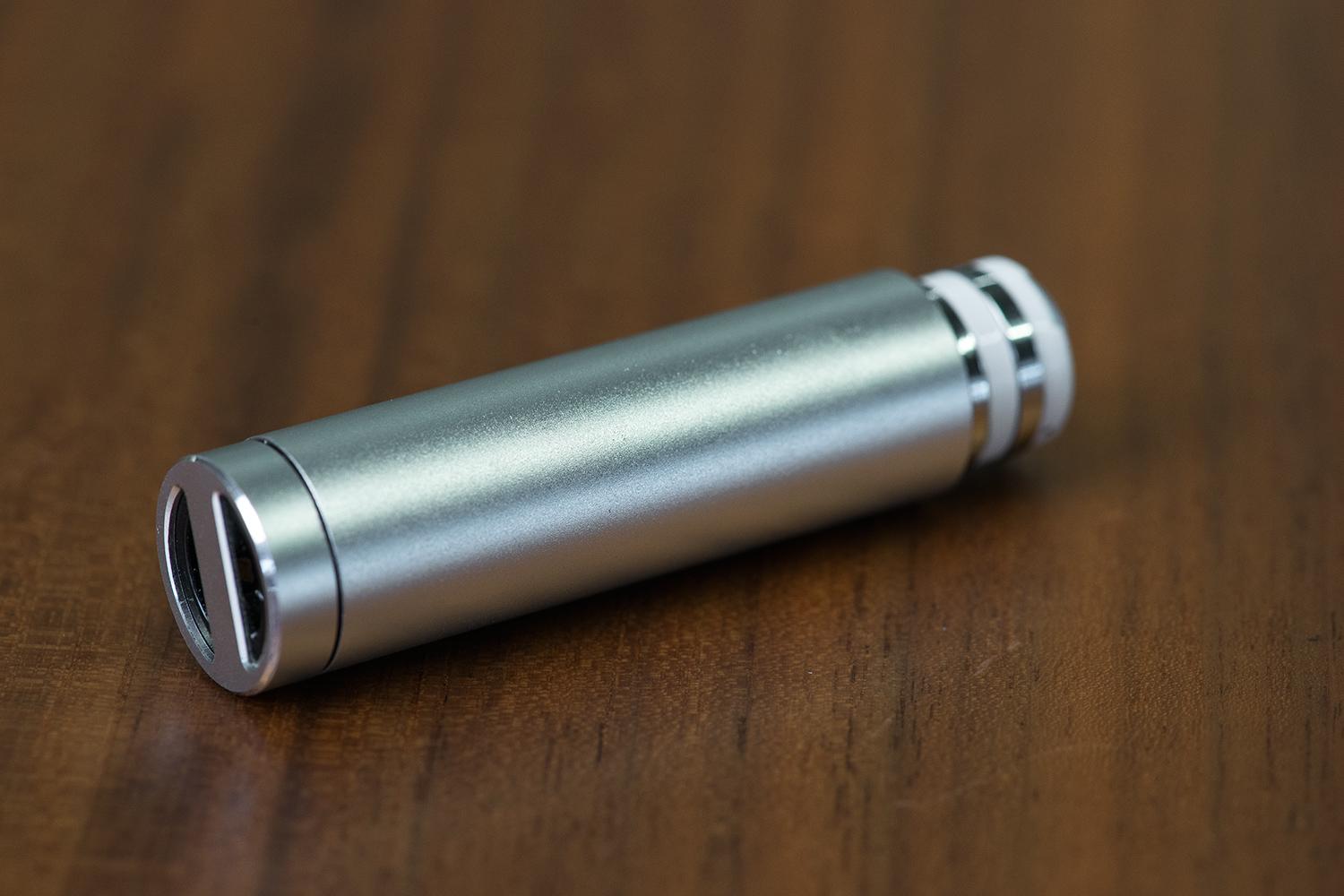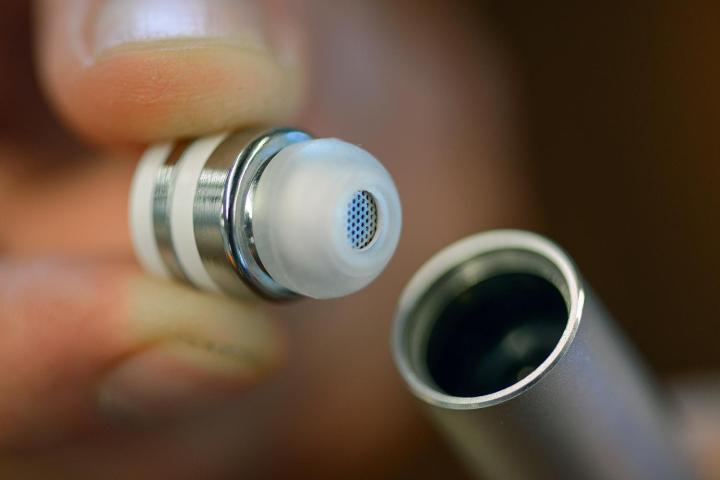
Ivan Kan had no way of knowing that he would cause such a ruckus — no way of knowing he even COULD cause such a rumble.
Yet, shortly after he launched a Kickstarter campaign last month to bring a completely wireless Bluetooth earbud to market in the U.S, that’s exactly what happened. While the Dot campaign was rocketing past its goal to reach nearly $300,000 in support, a vocal crowd of concerned backers took to the comments section questioning the legitimacy of some of Kan’s claims, and the origin of the Dot’s design. Some of the commenters reported the project to Kickstarter as illegitimate and Kickstarter suspended the campaign.
In that instant, Kan and his business partner at So Special Labs watched $300,000 vanish in a cloud of vitriolic smoke.
“We never claimed to have invented the technology.”
Kan now recognizes that Kickstarter was the wrong choice of platform from which to launch his project, but the damage has been done, and the mistake continues to haunt him today: The Dot campaign has been moved to competing site Indiegogo, but the clan of vigilantes that took Kan to task at Kickstarter have followed the project to its new project page and continue to deride it. The rebooted campaign has made its $30,000 goal, so the Dot stands a solid chance at becoming a real product you can buy in the United States. But even that possibility is now threatened, since the cat is out of the bag — now another U.S. company is putting in its bid to make a similar product.
Kan may never know if he could have built a successful brand around the Dot. He made some foolish mistakes, and the community of backers is making some stupid assumptions. Kickstarter, and the crowdfunding scene in general, is filled with a bunch of amateurs — both project creators, and project backers — and that makes it a very risky place to invest.
How this scandal began
The scandal surrounding the Dot kicked off when a project backer caught this listing on a Chinese manufacturer’s Web site. If you compare the images of the product on the Shenzen-based manufacturer’s site and images from the Dot product page, it looks like the Dot already exists as a product in China, and just a short leap away is the conclusion that Kan planned to repackage the product for the United States. That’s when the questions (and some trolls) started rolling in, and when answers weren’t given right away, the situation escalated. Kan and So Special Labs were accused of running a scam, being disingenuous, and faced a litany of other insults.
The motivation behind the venom stems from assumptions that the Dot already exists as a product in Asia (and at a far lower price), So Special Labs doesn’t have anything to do with the product’s development, and that no stereo version of the device exists (or is possible.)
All of those assumptions are false.
The misunderstanding hinges on the fact that most consumers don’t realize why many of the products they buy exist at all: it’s usually because some U.S. company decided to pluck an idea off a Chinese manufacturer’s shelf, develop it, customize it, pay for its production, brand it, market it, import it, distribute it, and service it. But is that wrong?
The real origin of the Dot
In a private interview with Digital Trends, Kan explained that he and business partner Jeffrey Maganis came across a prototype of a Bluetooth earbud at a trade show in Hong Kong, and spotted an opportunity.
“We never claimed to have invented the technology,” he told us. The truth, it seems, is far less black and white than his detractors paint it.
“Our strategy was to create an idea incubator … to bring products that people want into the mass market.”
At these trade shows, manufacturers with partially fleshed-out technology hock their wares, hoping that someone with investment capital can help fund their creation. And these are barely prototypes, because the technology behind them is rife with bugs. Sometimes, the manufacturing process and tooling need to make the products haven’t been created. For all intents and purposes, the product doesn’t really exist yet.
Sure, in the Dot’s case, there’s a Chinese website advertising the product and accepting “inquiries,” but the company is soliciting inquiries from companies that have enough capital to help pay for the tooling and the labor to make the product. (These sites serve a very similar role to Indiegogo or Kickstarter, actually, just without actual money changing hands.) None of that arrangement includes branding, marketing, import fees, customs clearance, or distribution to, you know, actually sell the product.
Kan’s idea was to take this skeleton of a product, improve on it, and make it a real thing U.S. consumers could buy. He and Maganis began working with the manufacturer to iron out some of the product’s bugs, and they weren’t satisfied with offering just a single-bud, mono version, either — Kan wanted a stereo version to diversify the product and make sure it was competitive against similar projects launched on Kickstarter. Indeed, the manufacturer could make just such a stereo version — and a prototype does exist — but wasn’t about to commit until there was clear interest in the project. That’s part of what the Kickstarter campaign was all about: proving there was a market in the USA for these tiny wireless earbuds. Also, the product needed a name, exposure, and some tweaking to better appeal to consumers. Better battery life, different colors, and a carrying case were also ideas on the table.
Kan believed turning to a crowd-funding platform was the perfect plan to achieve these goals. He submitted his product to Kickstarter, but kept Indiegogo in his back pocket as a plan B. When Kickstarter approved his project, he decided to move forward — a decision he now realizes was a mistake.
The angry mob forms
“We’re entrepreneurs,” says Kan of himself and Maganis. “When we got together, our strategy was to create an idea incubator … to bring products that people want into the mass market.”
“[Jeff’s] got the technical background, and my expertise is in marketing and branding. We believed that, together, we could take this product idea, improve on it, and bring it to market. Our intent was to develop a go-to market strategy … we never claimed to be the creators.”
But the Dot’s opponents on Kickstarter felt differently. Because the project was on Kickstarter, they assumed that it must be invented, engineered, and proofed by So Special Labs, and they were right to do so. Kickstarter’s rules “prohibit … rewards that the creator did not make.”
“I come from a family of lawyers and car salesmen, I can smell bullsh*t a mile away.”
Kan tells Digital Trends that it was never his intent to mislead backers, only that he wished to help bring a product to market that he suspected would be in high demand. He was right about that, but when he didn’t come right out and explain what he was doing immediately and in complete detail, more faith was lost. That’s unfortunate, because in speaking with Kan, he sounds nothing like a lawyer or car salesman, and from our point of view, nothing about trying to bring such a cool pair of Bluetooth earbuds to market is bullsh*t.
Anger soon progressed beyond the question over whether So Special Labs designed the Dot, though. Once again, via Scornwell: “We flagged it as violating the rules because the exact same product is already available from the same source you will ultimately purchase from, for a fraction of the cost.”
And then there’s this comment from Ben: “@SoSpecialLabs – Ok helping raise money … But the retail bulk price is $15-20? you charging x3+ amount. Usually KS or Ind is to seek backers in return backers usually gets the project at a discounted price, not costing backers 2-3 or even more times the amount. It’s like me charging you $10 for a Snicker Bar I bought for $1.”
Kan’s lack of complete transparency at the outset, paired with his long lead times on ambiguously-penned responses, are just cause for concern. But there wasn’t a whole lot he could do about being quick with his responses. “I am unable to respond to comments immediately because So Special Labs is my after-hours venture,” Kan told us. “I have a current full-time position as a product manager for software. I am only able to work on So Special Labs in the late evenings and weekends. Even the traveling I made to [Hong Kong] was done using vacation time.
If the backers’ objections were limited to Kan’s lack of transparency and violation of the spirit of Kickstarter’s rules, than the outrage could have stopped when Kickstarter suspended the project. But many of the detractors followed the project to Indiegogo, where they have pledged to back the project if only to be allowed to comment (an Indiegogo and Kickstarter requirement). Now, the outrage is centered around So Special’s business strategy — one that is commonplace for thousands of companies in the U.S.
No, you can’t go buy this from China
Many opponents to the Dot campaign claim the project is a sham because they can go buy the Dot online directly from the factory and at a much lower price. They are mistaken.
Here’s the bottom line: Unless you have at least $16,000 in capital, you can’t buy this product from the same Chinese manufacturer So Special Labs is working with. The best you can do is “inquire.” To get the manufacturer’s attention, you’d need to have 33 percent of the minimum proposed order of 1,000 units — roughly $5,280 — as a deposit just to get the ball rolling. Furthermore, you’d have to sign a contract putting you on the hook for the balance of the $16,000 order, usually to be paid when the product ships. And that’s just the beginning of the hell that is to come.
“The irony here is that now another U.S. company is reaching out to the factory.”
This minimum order is assumed to be followed by more orders in the future, and of greater quantity. Factories have no interest in making manufacturing tools for a product that will only sell 1,000 units. They want to sell many times that.
The manufacturer will also promise quality control, but it will be inadequate. Many manufacturers try to get away with anything they can, and that usually results in a product that fails key benchmarks. The only sure way to make sure a reliable product arrives on a shipping container is to have someone on the ground at the factory to make sure quality control procedures are carried out properly — that’ll cost more money.
Then there’s the import taxes and fees, customs clearance, logistics, warehousing, and distribution costs. All of these add up to an increase in individual unit pricing. The assertion that all Kan is doing is taking a $16/unit product and marking it up by three times is wildly inaccurate. But even so, a significant markup along those lines should be expected. That’s what lots of corporations do every day: considerably mark up prices on products built in China to make a profit. It would surprise you to learn what an iPhone actually costs to make.
Take these two portable smartphone chargers for example: The ibattz Vouge Battstation and the Anker 2nd Gen Astro. The first thing you’ll notice is the products look incredibly similar, and that’s because they are. Now, take a look at this product found on a Chinese manufacturer catalog page. The markup on these devices is even more substantial.
Here’s another example: Compare the Anker Mini, the Ravpower, and this product from an Asian manufacturer. Frankly, we could do this all day, and with any number of products. The point is this: the markup on products manufactured in China and sold in the U.S. may be shocking, but are completely common practice.
It’s understandable to be put off at the idea that someone might make a big profit with such huge markups because you weren’t aware it takes place, but how it is fair to single out one entity for something that so many do every day?
Let’s also take a moment to acknowledge that developing, branding, marketing, importing, storing, distributing, and servicing a product is real work — work that requires significant compensation. That’s what a go-to market strategy is: It’s a well-thought out plan that takes a prototype languishing in computer diagrams and spec sheets, and turns it into something you can pay for and hold in your hand — or, in this case, stick in your ear.
In other words: Don’t hate the player, hate the game.
What can we all learn from this
Kan’s learned a lot from this experience. He now knows that if you want to turn to crowd-funding to bring a product to market, you had better be prepared to answer the public’s questions, and answer them quickly. Would things have gone so far south for Kan if he had help taking care of the PR side of his campaign? Probably not. When people putting their money behind a product have questions — no matter how misguided they may be — they deserve honest, timely, and transparent answers.
He’s also learned that when you take something to Kickstarter without securing exclusivity agreements or owning any patents, then all bets are off. Kan tells us that even though the Dot has been funded on Indiegogo, it is under threat of getting squashed by a new competitor.
“The irony here is that now another U.S. company is reaching out to the factory,” says Kan. “I can only assume from the success of the Kickstarter. So now that relationship [with the factory] is being strained. I wouldn’t be surprised if another U.S. company will just buy out [the manufacturer’s] exclusive partnership and we would be forced to close the campaign … But the silver lining here is that if our goal was to tell the world about Dot, we have done an extremely good job of that at a great expense to ourselves! For the time being, Jeff and I will be focusing on putting the creators in the forefront of the campaign and supporting as much as we can.”
In other words, Kan intends to put the factory, Shenzhen EnJoYou Electronics Co. Ltd., front and center as the lead on the fundraising campaign. The idea is to increase transparency … but does it really matter? In the end, Kan and So Special Labs will still be doing all the footwork to make sure that Dot comes to the U.S. in a manner befitting what U.S. customers want — and make no mistake, that’s a lot of work.
If crowd-funding is the wild, wild West of a new world of commerce, then the crowd that’s doing the funding is going to need sheriffs to protect them and police the scene. But those sheriffs would be wise not to cast accusations around in a public forum without a full understanding of the situation, as they are likely to get a few things wrong. And in this case, it may destroy the dream of two men and our chance to use one awesome set of earbuds.
